'Next Act: A Profile of Euronext's Alain Courbebaisse
The last decade has seen Euronext chewed up and spun out following a series of mergers & acquisitions. Once again independent, Courbebaisse is writing the exchange’s IT roadmap.
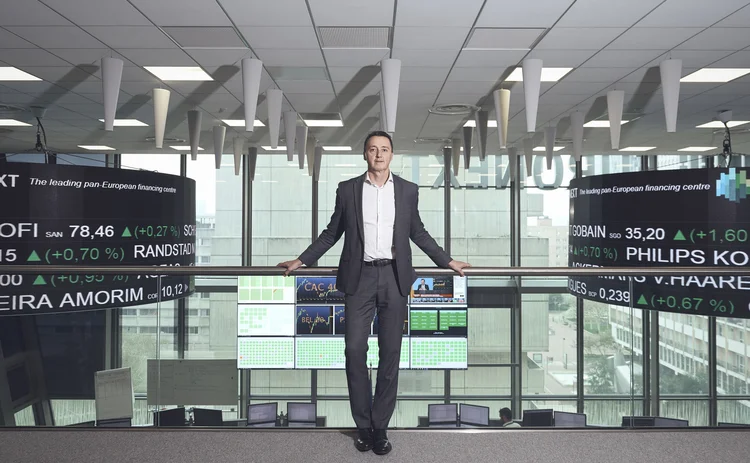
Running any business can feel like a life-or-death struggle, but Alain Courbebaisse knows what life-or-death really means.
One of Courbebaisse’s first tech jobs was heading up a team that developed life-saving medical technologies. He had no experience in finance—nor any interest in it—when he joined a French brokerage in 1999. Working in the financial services industry might seem a little tame compared to saving lives, but Courbebaisse happened to launch his career in finance just as unprecedented changes began to envelop financial technology.
Today—now a veteran of the capital markets—Courbebaisse must guide Euronext through a period of substantial transformation as the exchange unwinds legacy systems stemming from its marriage with the New York Stock Exchange (NYSE), which was dissolved three years earlier.
It’s now a well-known story: In 2006, NYSE agreed to buy Euronext, besting a counteroffer by Deutsche Börse. The new entity, NYSE Euronext, would itself get swallowed up, with the Intercontinental Exchange (ICE) Group acquiring the pan-Atlantic exchange in 2013. ICE’s management did not feel it was equipped to run the European arm of NYSE Euronext, so ICE divested Euronext, thus setting it free once more.
Even today, however, the exchange continues to battle for operational independence.
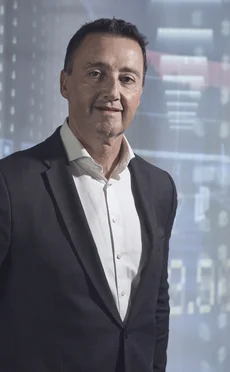
“When Euronext merged with NYSE, the focus on the European business became less important than it had been before. After it was bought by ICE, they decided to keep everything but Euronext. At this point, Euronext had to fight to remain independent and just survive,” says Courbebaisse.
Short-term survival seems assured now, and autonomy has become Euronext’s core focus. The company can finally grow into an independent entity and migrate its operations to Optiq, its proprietary trading platform.
Courbebaisse is leading this migration. But since his appointment, he has realized that the last few years of turmoil have unsettled Euronext’s tech staff, which comprises about 25% of the exchange’s total workforce. Improving morale has become a major priority for him, especially as these teams would go on to form the backbone of the company in its new era.
“There was a lack of self-belief at the time [of the spin-off]. When you don’t believe that you can achieve something, it always makes your job harder,” he says.
Coding to Save Lives
From the early days of his career, Courbebaisse has played a role in building out critical systems. His first few technology jobs, however, had little to do with the low-latency trading platforms of today.
In 1997, Courbebaisse became head of IT for Draeger Medical, a German healthcare firm. At Draeger, he managed a team of three and they were responsible for coding algorithms for life-saving technologies, including breathing apparatuses and anesthesia workstations. He recalls the time as an exciting point in his career, when he learned the significance of a meaningfully critical system.
“When it comes to coding a life-critical application, there is no margin for error. Dealing with such an environment, I quickly discovered the difference between what is and what isn’t a critical system,” says Courbebaisse.
In his two years at the healthcare firm, Courbebaisse helped to build a front-to-back, remote connectivity service for the firm, where out of about 200 staff, 150 worked remotely. He describes the project as fun; the team had to carefully write each piece of code and synchronize every individual remote personal computer to the central server. Courbebaisse also deployed Draeger’s very first customer relationship management (CRM) system.
But for Courbebaisse, his experience at Draeger Medical was pivotal not only for the technical projects he worked on, but because of the people he had met. Draeger’s CEO at that time was Alain Rastouil. Courbebaisse says Ratouil has inspired him more than anyone else throughout his career, and opened his eyes to a world of opportunities that he had access to, yet never realized existed.
“He gave me a lot of confidence in myself,” says Courbebaisse. “It was as if he unleashed my potential, or at least the perception of my potential. Especially when you come from a modest kind of background, you have no idea what’s possible. You don’t even compete, and you never imagine that you could get to this level.”
Courbebaisse has embedded these teachings into his own style of management. He sees it as his mission to nurture teams and establish confidence in their abilities. From his perspective, technology talent is a firm’s most important asset, and a core focus for him as CIO and head of technology at Euronext is to develop an attractive environment for people to grow, have fun and envisage a future.
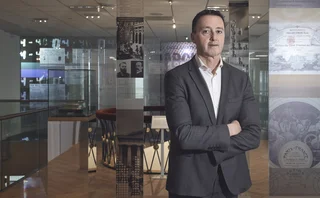
The Rebuild
When Courbebaisse was appointed CIO of Euronext in 2017, he perceived that the wounds inflicted by Euronext’s spin-off from NYSE went deeper than its technical infrastructure. Morale was low as staff were uncertain about the future.
To lift spirits, Courbebaisse is pushing for open dialogue between all levels of tech employees, acquiring diverse talent to challenge traditional work practices and create a process for rewarding hard work.
Courbebaisse and his team are responsible for implementing Euronext’s three-year Agility for Growth Strategy, which intends to diversify revenue streams, strengthen business lines and move into new geographies. Euronext currently operates exchanges in Paris, Brussels, Amsterdam, Lisbon and now Dublin, after acquiring the Irish Stock Exchange in March 2018. Seven months earlier, Euronext purchased FastMatch, a foreign exchange (FX) trading platform, now called Euronext FX.
This momentum slowed earlier this year when Nasdaq blocked Euronext’s attempt to take over 100% of the Oslo Børs, starting a bidding war. However, on May 14, Norway’s Finance Ministry approved Euronext’s bid to complete the $790 million takeover.
“At the moment, we are looking at what could be a game-changer for us,” says Courbebaisse. “We want to diversify our revenue streams and business services. We want to be less dependent on volume-related revenues and look at the post-trade environment and at other asset classes, as well as to be more commercially creative on the data side.”
As part of the strategic plan, Courbebaisse also heads up the delivery of Euronext’s wide-scale migration project to the Optiq trading platform. So far, the exchange has completed the move of its market data and cash markets for phase one and two of the rollout, and plans to finalize phase three—the migration of its derivatives markets—on November 25, 2019. But like most multi-year projects with multiple moving parts, time management and meeting deadlines for complex initiatives have proven to be challenging.
Courbebaisse says that, for Euronext, the difficulty lies in balancing the timelines for the Optiq platform, as it will act as the foundational layer of Euronext’s trading operations. The point is to ensure accurate completion of the underlying technology and each link in the chain, to avoid freezing the development of later project cycles.
“Managing time well, knowing when to apply change and when to prioritize what, can be one of the hardest things to do,” he says. “As the IT implementation of our Agility for Growth Strategy was the main focus for many years, there is a backlog of other initiatives that we now need to find time for.”
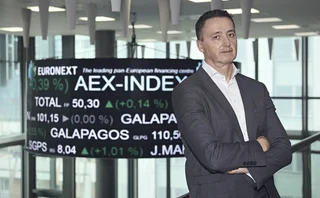
The Electronic Age
The road that led Courbebaisse to Euronext was a winding one, and he has seen his fair share of change and acquisitions.
In his Draeger days, Courbebaisse was never attracted to the financial world. But in 1999, French brokerage Fimat headhunted him. Courbebaisse knew nothing about trading when he was offered the job as head of IT at Fimat France, and barely understood how the financial space operated. He took the opportunity because he was a young dad, eager to progress in his career and on the lookout for a new challenge.
As it turned out, he could not have joined the industry at a better time. It was the advent of electronic trading and it didn’t matter if he had no experience, as even veterans of the trading floor were adapting to the new wave of automation, computing power and communication networks.
At Fimat, Courbebaisse got his first taste of trading technology—and he was hooked. He loved coming to grips with the technology and developing streamlined systems that could move money around the world. The excitement of building complex trading platforms at such a watershed moment for the markets set him on-route for a career in finance.
“I spent a lot of time on the desk with the traders, helping them to do their job. Their job was new at the time and most of them had been inside the pit shouting just one or two years prior. It was good timing [to join] and I think not knowing everything can sometimes allow you to have a more open mind,” he says.
Still, his career has not been without disappointments. In 2002, Courbebaisse was CIO of Fimat France and global head of development for the brokerage. At the time, the France offices were raking in profits and smashing performance targets, thanks in part to the platforms and processes he had helped to develop.
He believed that a promotion would be a “slam dunk.” So when the group announced it was seeking a global CIO, Courbebaisse was convinced the position was his—even calling his mother to explain that he would have to relocate from Paris to the firm’s New York offices.
But Courbebaisse, for once, had overshot. He was not even interviewed for the position. The lesson in humility was a valuable one, he says, though it was a tough pill to swallow.
“It took a bit of time for me to get over. Once I had moved past the sense of humiliation, I met the new guy. Technically and on team management, he didn’t have much to learn from me. But he taught me how to truly manage the entire ecosystem,” says Courbebaisse.
That “new guy” was Richard Wilson, and Courbebaisse and Wilson became great friends. When Wilson was later promoted once again, this time there was no doubt who would take his place—in 2009, Courbebaisse was named global CIO.
In his 16 years at Fimat and the various iterations that would eventually lead to Newedge (see Timeline), he saw at close range the markets change dramatically and irrevocably with the rise of the electronic age, the emergence of high-speed trading, the global financial crisis, and the ensuing onslaught of regulation.
These experiences would help to inform his ideas about how to best run Euronext’s technology team.
Timeline
1986 – Fimat was founded as a prime brokerage subsidiary of Societe Generale.
2008 – Fimat merged with Calyon Financial, a subsidiary of Crédit Agricole’s investment bank to create a joint prime brokerage business under a new title, Newedge.
2014 – Societe Generale acquired a 100% stake in Newedge from Crédit Agricole.
On the Defensive
One of Courbebaisse’s major challenges will be fixing Euronext’s IT culture. In order to make progress, he says, cultural mindsets must evolve to be more process-oriented. Removing legacy systems is not enough to remain competitive; workflows and processes also need to adapt. Exchanges have to future-proof their business lines to withstand the threats inherent in an increasingly competitive marketplace, and the heated debate about inflated exchange fees.
This is especially crucial as the exchange oligopolies of 20 years ago become a thing of the past. Today, exchanges are heavily criticized for price escalations and face fierce competition from alternative trading venues like systematic internalizers and multilateral trading facilities, dark pools and frequent batch auctions.
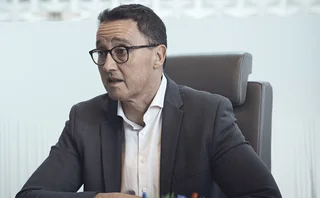
Even more worrying for the incumbent bourses was the announcement of the Members Exchange early this year: A group of nine major financial institutions joined forces in a bid to challenge heavyweight incumbents like Nasdaq; Cboe Global Markets; and Euronext’s old partner, NYSE.
Courbebaisse accepts that exchanges are having to adapt to this new level of competition. He says Euronext’s response to these growing threats will be to diversify business activities, enhance its data analytics and embrace new technologies, particularly the cloud.
“The next phase will be to deploy Optiq from the cloud with a whole set of analytics and data available in a matter of two clicks. We have everything, including the infrastructure, coded in a template and the function can be deployed in two seconds. Moving away from a static on-premise technology will make us far more agile and help us to move into something that is almost independent of the underlying infrastructure,” he says, noting that this plan will go into full effect after the final phase of the Optiq migration.
Another key differentiator will be the firm’s value-added analytics and alternative data offerings, such as environmental, social, and governance (ESG) data.
Euronext also wants to strengthen its engagement with other fintech companies and start-ups, in part to attract valuable tech talent. Courbebaisse says a shortage of skills is one of the most pressing issues impacting the industry. His hope is that working with fintech firms and start-ups on innovative projects in the future can be an effective way of making larger financial market firms more appealing to a diverse pool of candidates.
More than anything, Courbebaisse says he believes moving forward is the only way to survive in a disruptive market. Consistently reviewing, testing and auditing new technologies, quality checking processes and consistently seeking improvements are key pillars of the bourse’s plan to stay ahead.
“At Euronext, there is a cultural shift taking place—the strive for ‘continuous improvement.’ It means never taking your eye off the ball or resting on your laurels—you know it won’t last,” Courbebaisse says.
If it succeeds, it will be Euronext continuing to gobble up other exchanges and charting its own course—or else it will be a case of history repeating itself.
Further reading
Only users who have a paid subscription or are part of a corporate subscription are able to print or copy content.
To access these options, along with all other subscription benefits, please contact info@waterstechnology.com or view our subscription options here: http://subscriptions.waterstechnology.com/subscribe
You are currently unable to print this content. Please contact info@waterstechnology.com to find out more.
You are currently unable to copy this content. Please contact info@waterstechnology.com to find out more.
Copyright Infopro Digital Limited. All rights reserved.
As outlined in our terms and conditions, https://www.infopro-digital.com/terms-and-conditions/subscriptions/ (point 2.4), printing is limited to a single copy.
If you would like to purchase additional rights please email info@waterstechnology.com
Copyright Infopro Digital Limited. All rights reserved.
You may share this content using our article tools. As outlined in our terms and conditions, https://www.infopro-digital.com/terms-and-conditions/subscriptions/ (clause 2.4), an Authorised User may only make one copy of the materials for their own personal use. You must also comply with the restrictions in clause 2.5.
If you would like to purchase additional rights please email info@waterstechnology.com
More on Data Management
Nasdaq, AWS offer cloud exchange in a box for regional venues
The companies will leverage the experience gained from their relationship to provide an expanded range of services, including cloud and AI capabilities, to other market operators.
Bank of America reduces, reuses, and recycles tech for markets division
Voice of the CTO: When it comes to the old build, buy, or borrow debate, Ashok Krishnan and his team are increasingly leaning into repurposing tech that is tried and true.
Navigating the tariffs data minefield
The IMD Wrap: In an era of volatility and uncertainty, what datasets can investors employ to understand how potential tariffs could impact them, their suppliers, and their portfolios?
Project Condor: Inside the data exercise expanding Man Group’s universe
Voice of the CTO: The investment management firm is strategically restructuring its data and trading architecture.
Tariffs, data spikes, and having a ‘reasonable level of paranoia’
History doesn’t repeat itself, but it rhymes. Covid brought a “new normal” and a multitude of lessons that markets—and people—are still learning. New tariffs and global economic uncertainty mean it’s time to apply them, ready or not.
HSBC’s former global head of market data to grow Expand Research consulting arm
The business will look to help pull together the company’s existing data optimization offerings.
Stocks are sinking again. Are traders better prepared this time?
The IMD Wrap: The economic indicators aren’t good. But almost two decades after the credit crunch and financial crisis, the data and tools that will allow us to spot potential catastrophes are more accurate and widely available.
In data expansion plans, TMX Datalinx eyes AI for private data
After buying Wall Street Horizon in 2022, the Canadian exchange group’s data arm is looking to apply a similar playbook to other niche data areas, starting with private assets.







